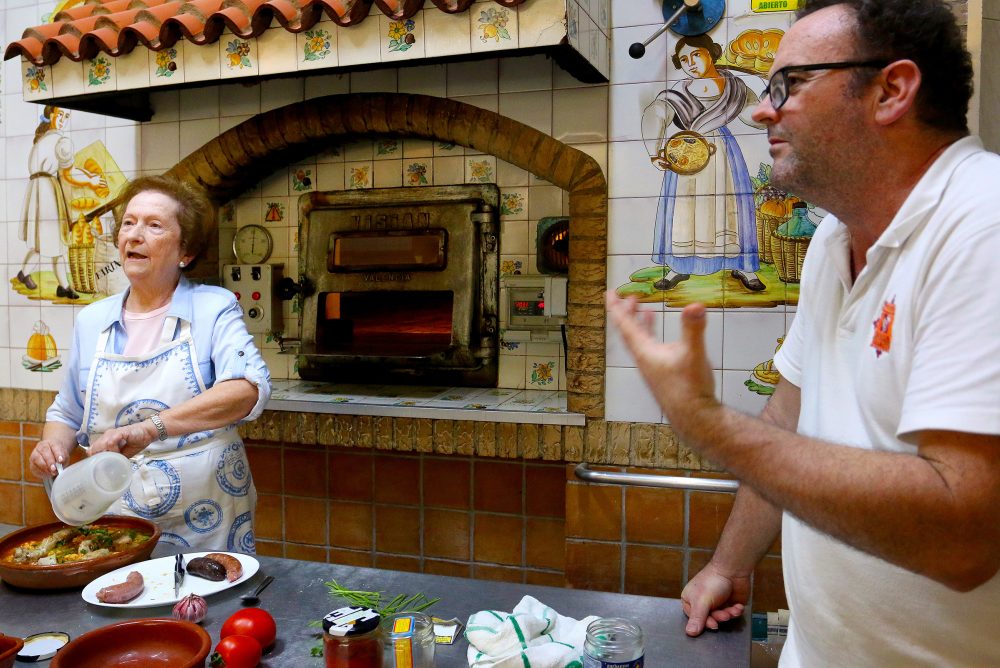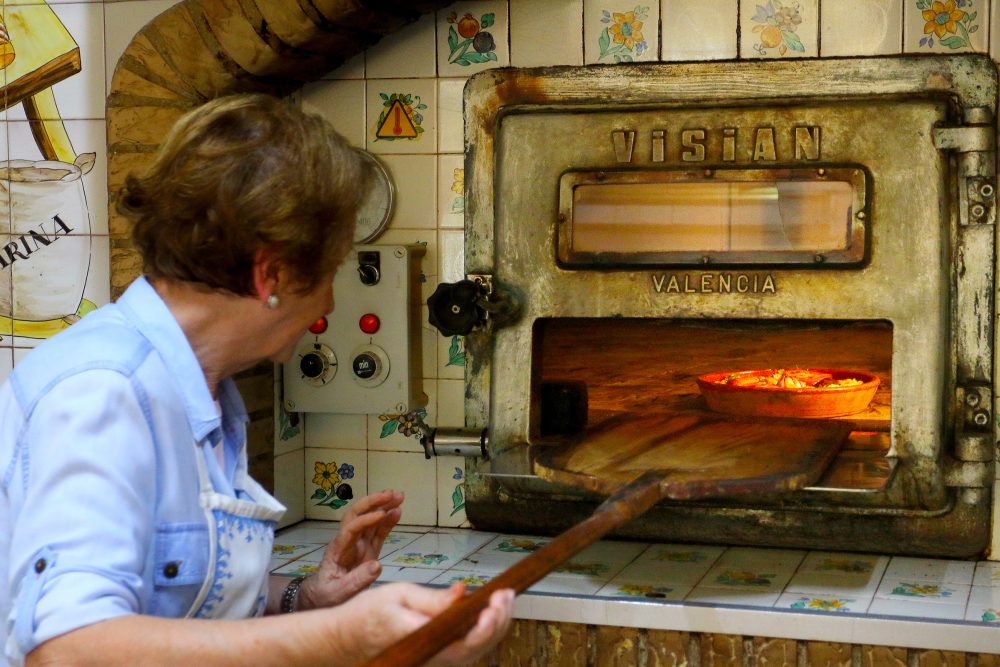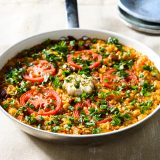Behind the glass pastry cases at Forn Velarte bakery, Victor Tomás slides a battered wooden paddle through the oven door. Wafers of a semisweet bread emerge, but by this point in the afternoon, the yeasty, sugary bakery aromas have been replaced by savory, smoky remnants of roasted vegetables.
Terra-cotta casserole dishes are scattered about with whole onions charred in their papery skins, roasted potatoes dusted with paprika and garlic oil, wrinkled halves of green-skinned pumpkins and trays of their toasted seeds. Among it all is the reason I’ve come, a round dish of saffron-scented rice studded with two types of sausage, pork ribs, roasted tomatoes, chickpeas and potatoes, plus a whole head of roasted garlic nestled into the center.

It’s arroz al horno, or oven-baked rice, and here in Valencia, it’s as foundational to the cuisine as bread itself. Indeed, to the left of the antique oven, hand-painted tiles depict a woman shaping dough into a loaf of bread. On the right, she holds a clay dish full of rice and meat.
“Arroz al horno is the mother rice for all of Valencian gastronomy,” says Paco Alonso, a television journalist and rice expert. Even he, the man who created the website Wikipaella, acknowledges arroz al horno is less fussy—and much more forgiving for an American home cook—than its better-known cousin, paella.
Some of its ingredients evoke paella—rice, broth, saffron, paprika—but suggesting they are the same is like telling an Italian all pastas are identical. Rice may be the base, but in arroz al horno, that’s just the start. Meat is key, sometimes in gluttonous ratios. But where Valencian paella may include mildly flavored chicken, shellfish or even rabbit, arroz al horno goes heavy on cured pork and sausages such as chorizo or morcilla that already come laden with spices and aromatics. Sautéing the meat first, then toasting the rice in the spiced oil, helps infuse the grains with extra flavor. Along with the chickpeas, potatoes and tomatoes, it’s the ultimate one-pan family meal.
Part of the appeal is that it doesn’t need tending, Alonso says. And until relatively recently, few houses had ovens, so cooks would assemble the ingredients at home and carry the dish to the local bakery. Pay a few cents to cook the rice, as well as roast all kinds of other foods—peppers, eggplants, whole chickens, game birds and more—and catch up on neighborhood news before walking home to feed the family (which is why the dish’s nickname is arròs passejat, or “walking rice”).
When I arrive at the bakery, Tomás’ mother, Maria Velarte, is busy grating a tomato for her second batch of arroz al horno that day. “Making too much is always a good idea,” she says, “because leftovers always taste better.”
She sets up a portable burner on a prep table and browns ingredients in quick succession before transferring them to the terra-cotta dish, called a cazuela. First come the cuts of pork—black morcilla sausage, pale blanquet and chunks of ribs—to infuse the olive oil with their flavor, then diced potato and chickpeas.
Finally, she cooks the grated tomato with more chopped garlic and paprika and stirs the rice into the mixture so it absorbs the flavors. Once saffron-scented chicken broth is mixed in, she shakes the cazuela, submerging errant grains below the broth. The full head of garlic in the center will leach into the broth as it roasts, permeating the rice with a subtle sweetness.
After half an hour in the oven, the steaming rice emerges as a mixture of tender grains and crispy bits at the edges. The flavors have melded, each meat suffusing its neighbor with its essence, but each ingredient retains its distinct texture and flavor.

For our arroz al horno, we streamlined the ingredient list for a lighter, simpler dish, opting to use only chorizo, which already is spiced with paprika. Even with fewer meats, the rice is rich and savory, and the roasted tomatoes, potatoes and chickpeas steer the meal in a homey, comforting direction. Decidedly not paella—and certainly delicious.







